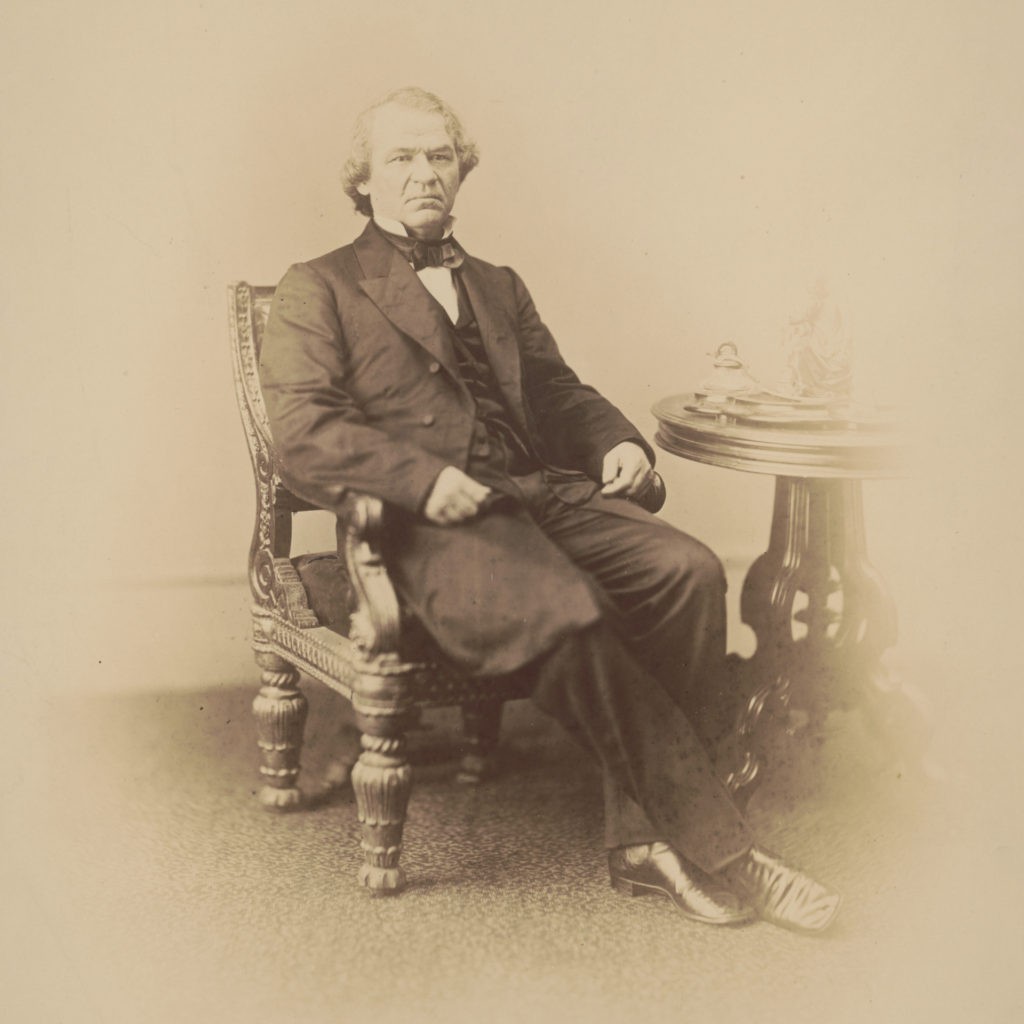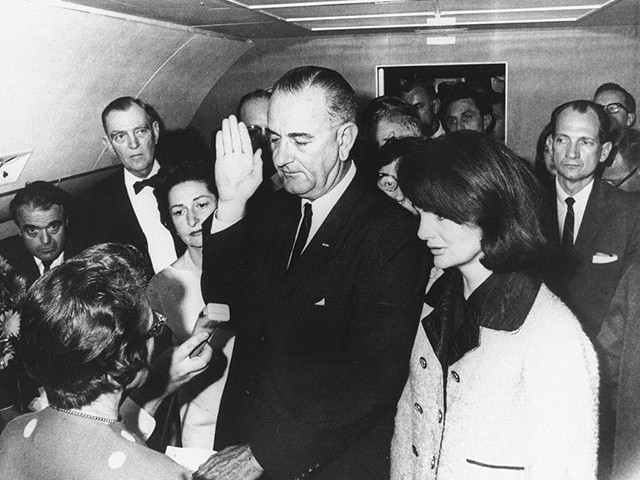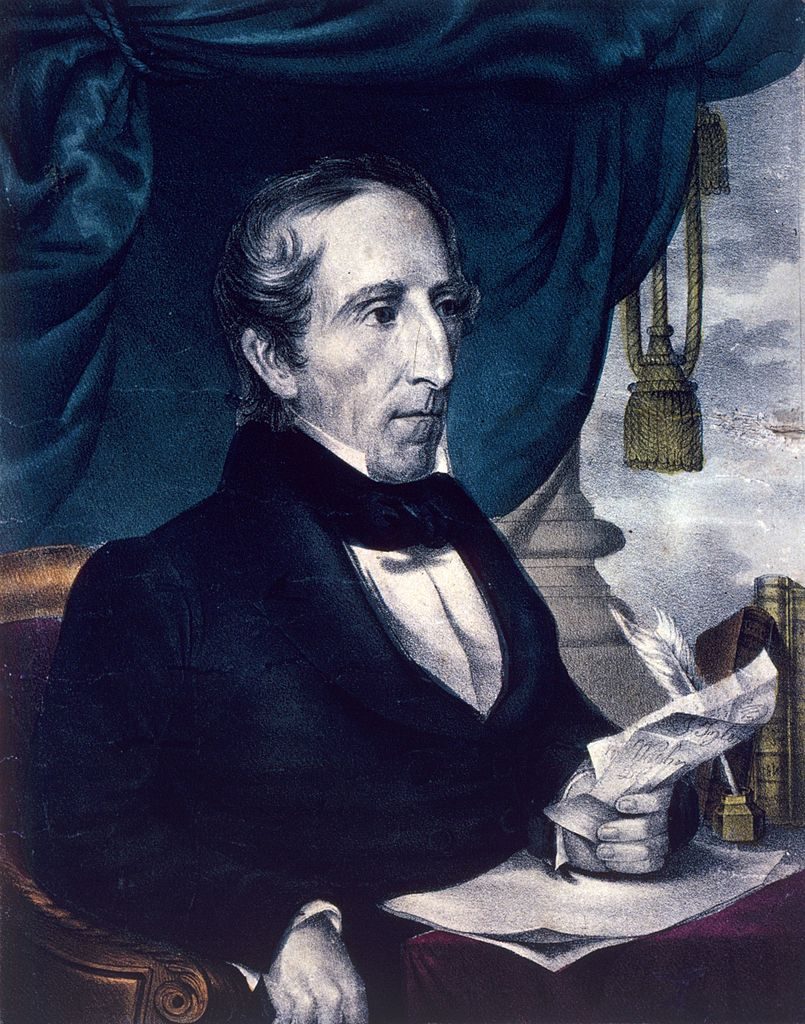Pinkerton: Five Times in U.S. History a Vice President Became President — and Brought Huge Change
Tucker Carlson said on Fox News on July 29 that Joe Biden’s selection of a running mate “will be the most consequential VP pick in American history.”
As Carlson put it, “Biden cannot govern the country. He isn’t capable of it. He’s all but admitted that. He said he won’t run for a second term.” So Carlson was saying that Biden not running in 2024 would mean that his vice president would be well positioned to run for president himself—or, more likely, herself.
Of course, Biden hasn’t won the presidency yet, and he may never do so. However, if he does win, there’s another obvious wrinkle in his presidential future. Indeed, one might say that it’s the, uh, donkey in the room—that a man born on November 20, 1942, might not remain in office until January 20, 2025. If so, then his vice president will become president.
And so yes, Carlson is right: Biden’s choice of a running mate—rumored to be coming in the next few days—will be consequential. Why? Because she (it’s almost certain to be a she), as the 47th president, might strike off in a different direction than the 46th president.
So that’s the issue Carlson was getting at: If the polls are to be believed, plenty of Americans plan on voting for Biden because they see him as a moderate—at least by Democrat Party standards. And yet what if a possible Democrat 47th president sees things differently? What if there’s a big lurch to the left? If so, then the change in the White House, and in America, could be dramatic.
For the time being, there’s no point in getting lost in speculation about speculative future events, but a look back at our history tells us just how much can change when a president is suddenly replaced by a vice president. Specifically, we can focus on five examples:
1. John Tyler
Back in 1840, William Henry Harrison was elected to the White House on the Whig ticket. By the standards of the time, Harrison was quite old; he was 68 on the day he was inaugurated as our ninth president. And, in fact, he died on April 4, 1841, just a month into his term; his was the shortest presidential tenure ever.
Harrison’s vice president and successor, as the tenth president, was John Tyler. Tyler was a much different figure than Harrison; although both men were born in Virginia, Harrison had gone off to become a hero in the War of 1812 and in various Indian wars in the Midwest, and he was also elected as a U.S. senator from Ohio. Indeed, most of the Whig Party—the forerunner to the Republican Party—was more oriented toward the North, and increasingly oriented toward Yankee causes, including the abolition of slavery.
Meanwhile, Tyler had always stayed close to home, physically and politically, to the Old Dominion. He was a Southern Whig, forever a strong proponent of the Southern cause, including slavery. In other words, Harrison-Tyler—better Tippecanoe and Tyler too—was classic ticket-balancing, the Yankee-oriented Harrison and the Dixie-oriented Tyler.
So when Tyler became president, he had his own very different ideas, and a full 47 months in office in which to advance them. Indeed, his agenda was mostly antithetical to that of his deceased predecessor, as well as completely antithetical to the Whig Party as a whole. In exasperation, the Whigs expelled Tyler from their party, and so, of course, they refused to support his renomination for the 1844 election. In the meantime, from the White House, Tyler tried to join the Democrat Party, which wouldn’t have him; he then attempted to set up his own party—which fizzled, even before the November balloting. In the resulting chaos, the Democrat Party nominee, James K. Polk, won the White House, becoming the eleventh president.
So we can see: A vice presidential choice completely derailed a presidential election. And we can add, as a footnote, that Tyler, after leaving the White House, returned to Virginia, where he lived until his death in 1862. He is remembered as the only former president of the United States of America to support the Confederates States of America.
2. Andrew Johnson

This 1866 photo made available by the U.S. Library of Congress shows President Andrew Johnson in Washington, DC. (A. Gardner/Library of Congress via AP)
When our sixteenth president, Abraham Lincoln, was running for a second term in 1864, in the middle of the Civil War, he felt that he needed a unifying ticket to help clinch his reelection. In fact, technically, Lincoln ran for reelection, not as the head of the Republican Party, but as the head of the newly christened National Union Party. And in that spirit of unity, he chose, as his running mate, Andrew Johnson, a pro-Union Democrat from Tennessee. Johnson was a major figure in that state; he was a former senator whom Lincoln had appointed military governor in 1862. So Lincoln knew Johnson well enough, and he saw the value of adding him to the national ticket—although he never really considered the possibility that Johnson would become president.
Lincoln, of course, was assassinated in April 1865. So like Tyler two decades earlier, now-President Johnson also had 47 months in the White House ahead of him. And the big issue, in those days, was the reunification of the United States; that is, 25 states that had stayed loyal to the Union had to be rejoined by the 11 states of the defeated Confederacy.
The term for this program of reunification was Reconstruction, and, not surprisingly, controversial. Most of the Northern Republican Party wanted what was termed “radical” Reconstruction, while others—Democrats as well as some Republicans—supported a more conciliatory approach.
Johnson himself, perhaps not surprisingly for a Tennessean, was in the latter camp. He was, after all, never a Republican.
This profound conflict of visions led to a political battle royale, culminating in Johnson’s 1868 impeachment by the Republican-controlled House of Representatives. In the subsequent trial in the Senate, Johnson was acquitted by a single vote. And not at all surprisingly, he wasn’t to be nominated by the Republican Party to run in 1868; the nomination went, instead, to Ulysses S. Grant, who then won the election. (Johnson returned to Tennessee and was later elected, again, to the U.S. Senate.)
Meanwhile, President Grant attempted to revive an energetic Reconstruction, but the momentum was lost, and the whole program was cancelled in the 1870s. So once again, a vice presidential choice led to significant watershed consequences.
3. Theodore Roosevelt
Our 25th president, William McKinley, was first elected in 1896; his running mate, later vice president, Garret Hobart, died in 1899. Looking ahead to his reelection campaign in 1900, McKinley and his advisers saw the chance to add a colorful and dynamic young war hero-turned-governor of New York, Teddy Roosevelt, to the ticket. Roosevelt was a fellow Republican, and yet beyond that, he and McKinley didn’t have much in common; McKinley was a conservative, by temperament and ideology, while TR was an activist and a reformer.
Still, together, they were elected in 1900. And then, the following year, McKinley was assassinated in Buffalo, New York. Sworn in as the 26th president at the tender age of 42—the youngest person ever to accede to the office—Roosevelt was deeply respectful of McKinley’s memory, and yet, at the same time, he was ardently determined to chart his own course as a progressive trust-buster.
Thus once again, the agenda of a president was transformed by his vice president-turned-president. Most historians say that TR was the greater leader than McKinley, and yet, whether the change was for the better or for the worse, TR was undeniably not in the McKinley mold. So McKinley’s choice of a running mate, followed, then, by his own death, changed history.
By now, we’re seeing the pattern: The presidential candidate adds a vice presidential running mate, without much regard to what the number two actually thinks. Then the duo gets elected—and then tragedy happens, and everything changes.
Two more examples will round out the point:
4. Harry Truman
In 1944, even though in visibly poor health, Franklin D. Roosevelt resolved to seek an unprecedented fourth term in the White House. This was, after all, late in World War Two, and the commander-in-chief to achieve not only final victory, but also to build a post-war peace, including a warm relationship with Josef Stalin’s Soviet Union.
Roosevelt’s fellow Democrats were supportive of his candidacy, but party pros realized that he probably wouldn’t survive another four years; they further worried that his vice president, Henry Wallace, was a bit too eccentric and way too far to the left—and they didn’t want to see him become president, ever.
So the party bosses prevailed upon Roosevelt to dump Wallace from the ’44 ticket, replacing him with a more normal and centrist figure, Missouri Senator Harry Truman. So in this sense, the party insiders, for once, were looking ahead and seeing the future clearly: They saw the prospect that the vice president would ascend to the presidency, and they wanted that person to be someone that they, and the nation, could be comfortable with.
Indeed, FDR died in April 1945, thus raisingTruman to the Oval Office. Happily, Truman was an able man, who had been a notably effective senator, and yet now he had to operate on a whole new plane of duty; he was now commander-in-chief of a nation at war, with 16 million men under arms, deploying to every continent, pursuing a war against two evil empires. As Truman recalled, when he got the news that FDR had died, “I felt like the moon, the stars, and all of the planets had fallen on me.”
Nonetheless, the new 33rd president soon proved his mettle: In May 1945, he presided over the unconditional surrender of Nazi Germany, and then, when the atomic bomb was successfully tested in July, he approved its use on Japan the following month—thus bringing that war, too, to a triumphant end. The use of the A-bomb was controversial, and yet Truman knew that the alternative, a land invasion of Japan, would have cost millions of lives, both American and Japanese.
We can observe that these are the wartime decisions that FDR also would have made, had he lived. The big difference between FDR and Truman was in their handling of the post-war era, specifically, our stance toward the Soviet Union.
Almost certainly, had FDR lived, he would have taken a softer line toward the Russians. By contrast, Truman felt more instinctively suspicious of the communists; it was he who invited Winston Churchill to his home state of Missouri in 1946 to deliver his famous “Iron Curtain” speech. In other words, even fans of FDR should concede that HST was the better leader for the beginning of the Cold War.
5. Lyndon B. Johnson

Flanked by Jackie Kennedy (R) and his wife Lady Bird Johnson (2ndL), Vice President Lyndon Johnson is administered the oath of office as he assumed the presidency November 22, 1963, following the assassination of President John F. Kennedy in Dallas. (JFK Presidential Library/AFP via Getty Images)
In 1960, both John F. Kennedy and Lyndon B. Johnson were Democrats with presidential aspirations, and yet they had little in common otherwise. JFK was a handsome, cool, Catholic from Massachusetts, and LBJ was a rumpled, emotional, Protestant from Texas. And in that year, they were joined together for one simple reason: Kennedy thought Johnson could help him carry Southern states, especially, of course, Texas.
Johnson did, in fact, help the national ticket, aiding Kennedy in carrying six Dixie states. And yet once in office, the 35th president and the 37th vice president found that they had little in common—and, indeed, little affection for each other.
Yet then, once again, fate intervened; on November 22, 1963, JFK became the fourth American president to be assassinated, and the eighth to die in office.
So now, Johnson had the duty of picking up the torch and carrying on. Paying homage to his slain predecessor, in his first presidential speech to Congress, on November 27, 1963, he declared, “Let us continue.”
And yet, of course, many things were different. As president, Johnson proved far more effective than Kennedy in actually advancing legislation, such as the 1964 Civil Rights Act, as well as the healthcare, voting rights, and immigration bills of 1965.
Moreover, LBJ also dramatically escalated the American military presence in Vietnam. And as for the Vietnam War—soon to be the Vietnam quagmire—some say that JFK, had he lived to enjoy a second term, would have committed to the same escalation, while others say otherwise. As to which, we’ll never know. All we do know is that American troops committed to Vietnam numbered 16,000 when JFK died in 1963, and that the number rose to 536,000 in Johnson’s last year in office, 1969. And U.S. fatalities, too, multiplied astronomically.
So we can see: Five presidents died in office, five vice presidents succeeded them—and in each instance, the flow of American history was channeled in a new direction.
Such sudden re-channeling will happen again. We don’t know when, exactly, but it will indeed happen. Perhaps very soon.








Comments are closed.